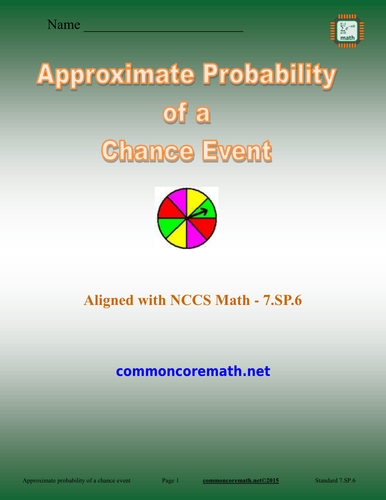







Great lesson for understanding difference between theoretical and experimental probability. Hands on projects reinforce earlier lessons, while introducing new concepts. Scaffolded lesson provides for classroom differentiation. Can be used as a lesson leader, guided practice, independent practice, for cooperative learning and math centers, or as an assessment. Use with smartboard, projector, computer, pad or as printable. Lesson is complete - NO PREP. Editable version included.
Objectives:
- Collect data from probability experiments
- Recognize as the number of trials increases, experimental probability approaches theoretical probability
- Understand relative frequency as the value found by dividing the number of times an event occurs by the total number of trials
Includes 6 practice pages and answer keys.
Aligned with NCCS Math - 7.SP.6
Visit commoncoremath.net for additional help.
Objectives:
- Collect data from probability experiments
- Recognize as the number of trials increases, experimental probability approaches theoretical probability
- Understand relative frequency as the value found by dividing the number of times an event occurs by the total number of trials
Includes 6 practice pages and answer keys.
Aligned with NCCS Math - 7.SP.6
Visit commoncoremath.net for additional help.
Something went wrong, please try again later.
This resource hasn't been reviewed yet
To ensure quality for our reviews, only customers who have purchased this resource can review it
Report this resourceto let us know if it violates our terms and conditions.
Our customer service team will review your report and will be in touch.
$3.00
